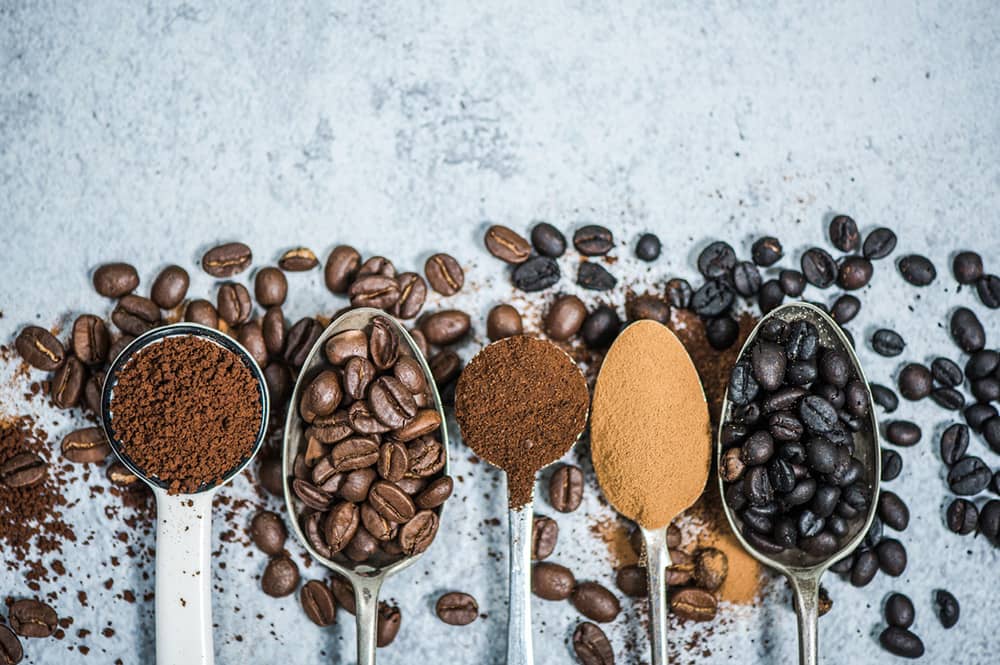Most home coffee brewing fanatics fail at brewing great coffee before they even begin.
They invest in the best coffee grinder they can find and find they still brew average tasting coffee. The worst part: they don’t know why, and It drives them crazy!
With just one small tweak you can fix this. Keep reading to avoid making this common mistake and make great tasting coffee.
The backbone of great coffee = the perfect coffee grounds (1). Don’t underestimate the importance of grinding:
Your grounds are your most valuable and overlooked tool, until today. We share with you where you have been going wrong, and everything else there is to know about grinding coffee. By the time you have finished reading this post, you’ll be brewing the best coffee of your life.
First we’re going to take a quick look at the different grind sizes, when you should use each, and with which settings you can achieve them with your coffee grinder.
The Relationship Between Coffee Grounds, And Over/Under Extracted Coffee
Do not skip this section.
What you’re about to read is critical knowledge for brewing coffee. Having the best coffee maker and the best coffee beans in the world won’t mean anything if you don’t understand extraction. It’s time you understood coffee extraction, and in doing so, you’ll be able to avoid under and over-extraction.
Both are bad news for your coffee and bad news for you. Avoiding this is actually the whole reason we use different grind sizes for different coffee makers.
Your goal in choosing a grind size: extract the perfect amount of flavor from your coffee. Too little and you’ve under-extracted it, too much and you’ve over extracted it.
Under extraction.
This is when you have not extracted enough flavor out of your ground coffee
- Your grounds are too coarse
- Sour
- Acidic
- Salty
Over extracted
This is when you have extracted too much flavor out of your coffee – and it becomes overpowering and unpleasant
- Your grounds are too fine
- Bitter
- Hollow – A lack any notable coffee bean flavors
….So you’ve made a coffee, and to your disgust it tastes like it’s been poorly extracted.
You don’t want it to happen again, wasting more precious coffee, but you have no idea where you went wrong.
We’ve got you!
You need to tweak either the brew time, your water temperature or your grind size, based on how it tastes:
| FLAVOR | BREW TIME | WATER TEMP | GRIND |
| Sour | Increase | Decrease | Finer |
| Bitter | Decrease | Hotter | Courser |
Blade Vs Burr Grinders
Before you read any further: if you’ve been using a blade grinder for your coffee beans, you’ve been making the most common coffee grinding mistake that exists. Do NOT grind your coffee beans with a blade grinder. Doing so is WORSE than buying pre-ground coffee.
Yes, worse. Why?
First of all, the key to brewing a great cup of coffee is consistency, and if your little grinds are not all the same size, some will be over extracted, some will be under extracted, and the result will be, well… shit coffee.
Aside from a clear lack of consistency, blade coffee grinders have another pitfall: they can only work by spinning extremely fast, which causes heat and friction. This heat and friction, as you guessed, is bad news. This means your coffee is already heating up so it won’t taste as fresh and the end result will be overcooked.
Now, compare all that nonsense to a burr grinder, which use uniform pressure and rotation to essentially ‘crush’ beans into a perfect consistency. They can achieve this at low speeds, meaning no added heat, and maintain a precise and consistent uniform grind.
